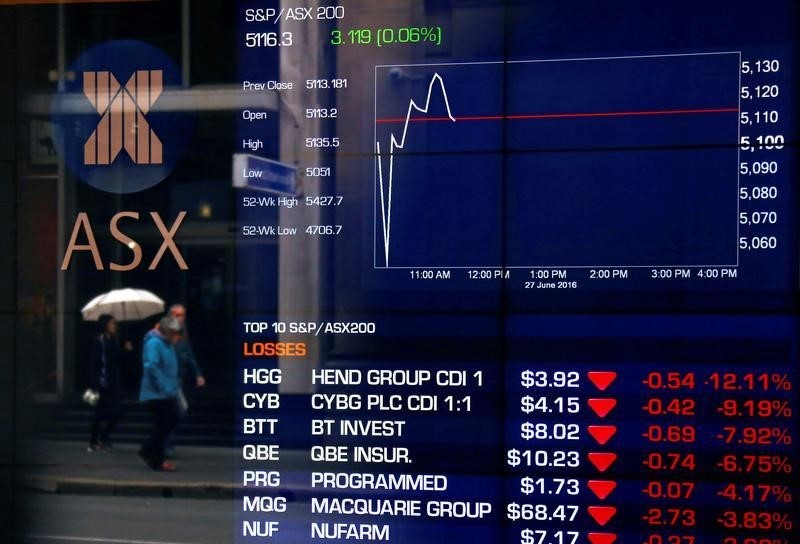
Australian stocks face turbulence as economic surprises slow – Macquarie
Investing.com– Australian shares may face a slowdown in returns as a key economic indicator, known as the surprise cycle, appears to have peaked, according to Macquarie. The cycle measures how much economic data beats or falls short of expectations, and it hit a high in mid-November.
This shift marks the start of a downcycle, where surprises are less positive or even turn negative. Historically, such periods see weaker gains for stocks, said analysts at Macquarie in a note.
“Investors are currently very optimistic, but this level of confidence can make markets vulnerable to corrections, especially with global uncertainties like U.S. policy changes on the horizon,” Macquarie said. It also noted that Donald Trump’s return to the U.S. presidency could create market jitters.
Macquarie advises a cautious approach, suggesting investors shift toward safer sectors like healthcare, gold, and real estate. Companies like CSL Ltd (ASX:CSL), Resmed Inc (ASX:RMD), and Mirvac Group (ASX:MGR) are highlighted as potential winners from lower bond yields. On the flip side, banks and insurance companies could feel the pinch.
“Especially when surprises turn negative, we would expect defensives and sectors that benefit from lower bond yields to outperform,” the brokerage said.
While the Reserve Bank of Australia (RBA) is expected to cut interest rates in 2025, Macquarie believes no action will be taken until after the federal election early next year. This delay could keep consumers under pressure as high borrowing costs weigh on household budgets.
Macquarie sees the current downcycle lasting until February, aligning with Australia’s corporate earnings season. At that point, the brokerage suggests it could be a better time to return to riskier sectors.
“The upcoming months may be bumpy for markets, but February could offer a chance for growth if conditions stabilize,” Macquarie added.

